EXECUTIVE SUMMARY
As a progressive employer who believes equality is one of the key pillars of a successful business, we are pleased to once again report against the annual requirements of the Equality Act 2010 (Gender Pay Gap Information) Regulations 2017.
In our seventh year of reporting we unfortunately report a mixed set of results. Following the covid pandemic, introduction of IR35, Brexit and the current cost of living crisis which have all had a serious impact on the labour market; recruitment and retention has been extremely challenging over the last 24 months. Our results have been impacted specifically by the loss of one of our highest earners who was female.
The proportion of each gender in quartile pay bands is skewed as only 11% of the workforce are female, however when we look at dispersion of each gender across the same pay quartiles it shows a significantly different picture:
| Quartile | Lower | Lower middle | Upper middle | Upper |
| Female | 37.1% | 8.6% | 8.6% | 45.7% |
| Male | 23.5% | 27.0% | 27.0% | 22.5% |
DECLARATION
I hereby confirm that the information provided in this report to be accurate.
John Cooper
CEO
2 October 2023
INTRODUCTION
Interfloor Limited is required by law to carry out Gender Pay Reporting under the Equality Act 2010 (Gender Pay Gap Information) Regulations 2017. We are a progressive employer who believes fairness in all we do is one of the core foundations to our business approach.
The reporting requirement involves carrying out six calculations that show the difference between the average earnings of men and women in our organisation. We can use these results to assess:
The challenge for Interfloor and across the UK is to eliminate any gender pay gap.
GENDER PAY GAP CALCULATIONS
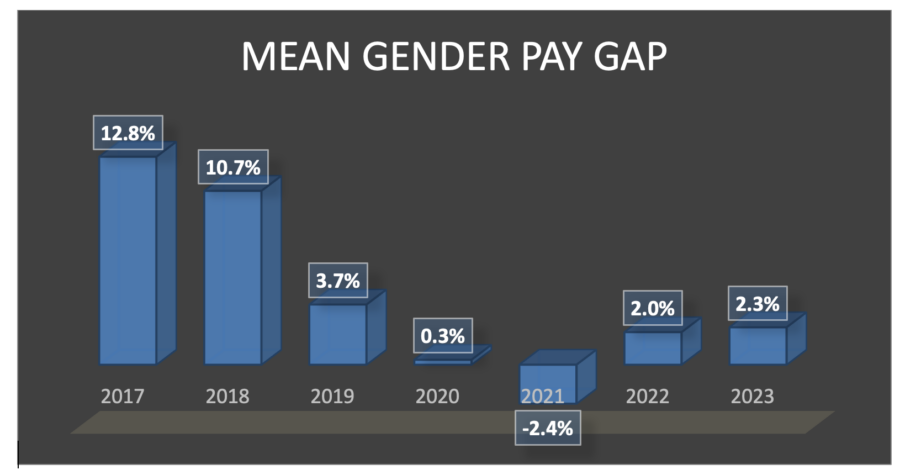
After showing a significant year on year improvement over the first 5 years of reporting resulting in a gap in favour of females by 2021, the situation has unfortunately worsened a little over the last 2 years. This was partly driven by the loss of one of our Directors who was female in each of the last 2 years, as well as a significant wage increases for HGV drivers through market forces who are predominantly male.
Mean averages are useful because they place the same value on every number they use, giving a good overall indication of the gender pay gap, but very large or small pay rates can dominate and distort the answer.
Our analysis of comparable roles shows that we reward men and women fairly for similar work. There are 2 key drivers behind our mean gender pay gap, the largest of those being shiftwork. As a traditional manufacturing Company two thirds of our employees work shiftwork, 99% of whom are male, and who receive an additional allowance which is not related to their value to the business but is compensation for anti-social working hours. Any women working these shift work patterns would receive exactly the same remuneration. Excluding shift working allowances from the calculation brings the mean gender pay gap significantly down to -1.1% meaning we on average pay our female employees better than their male counter-parts when we exclude anti-social working payments. Whilst there is no occupational reason for male dominance in this role we continue to find it extremely difficult to attract females to manufacturing roles.
The second key driver reflects the lower representation of women at senior levels within the organisation and especially our difficulty in recruiting women in operations, technical and engineering disciplines. However, whilst just over 5 years ago we had 0% female representation in our Senior Management Team, we now have 10% and will focus on how this can be grown. We will also focus on growing female representation in middle management..
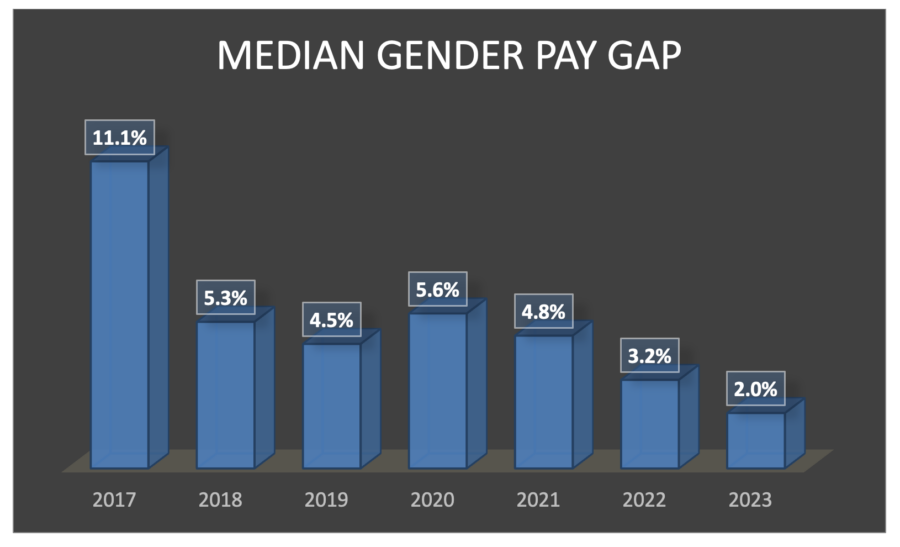
Despite losing a little ground in 2020 we have shown significant year on year improvement reducing from 11.1% in 2017 to now only 2.0%.
Median averages are useful to indicate what the ‘typical’ situation is i.e. in the middle of an organisation and are not distorted by very large or small pay rates.
Once again shift working allowances were the key driver in the gap and excluding these anti-social working payments the gap was actually -1.9% (i.e. the middle paid female was paid more than the middle paid male).
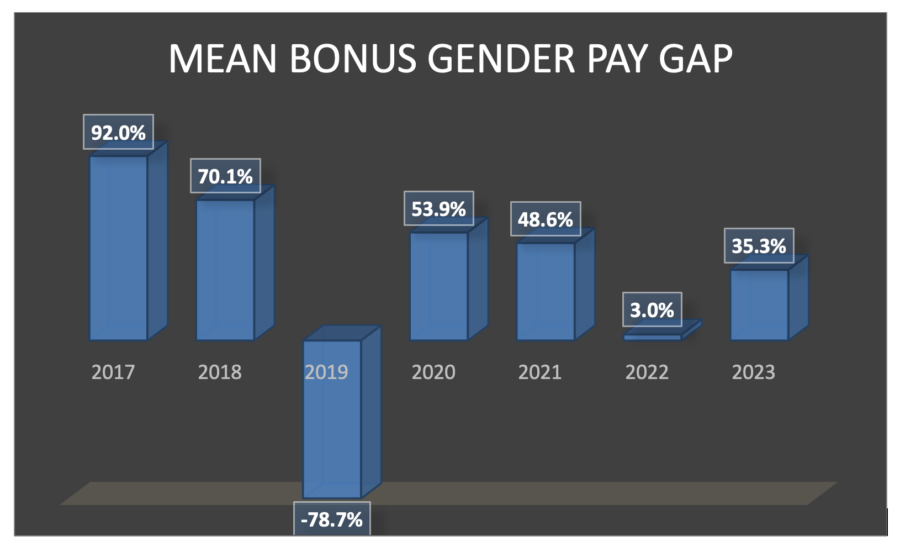
Whilst this can be a good measure where bonus payments are common across an organisation, large or small bonus payments can dominate and distort the answer where such payments are not prevalent across the business. This is the case for Interfloor as bonus schemes are limited to Senior Management as well as UK and International Sales functions which make up less than 10% of the workforce.
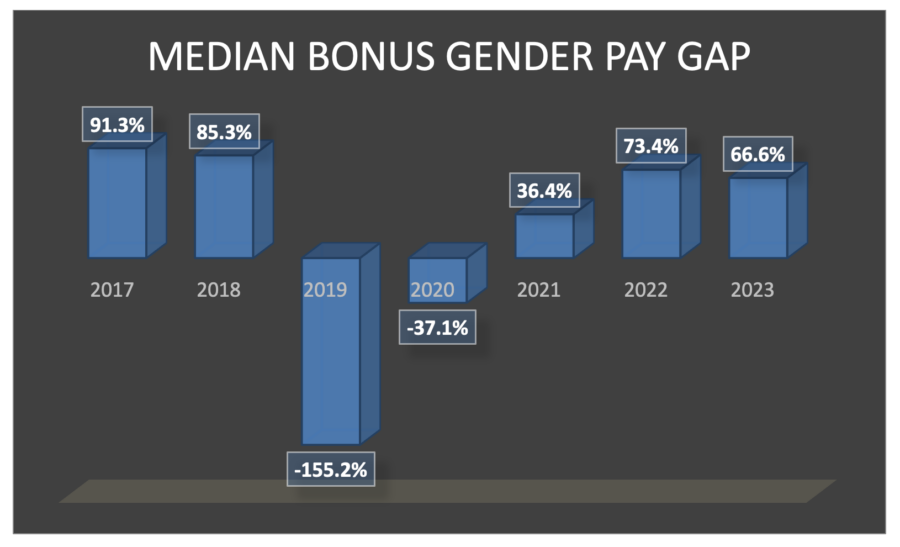
The median bonus gender pay gap favoured our male employees this year, but similar to the mean gap above is distorted by a very small number of employees.
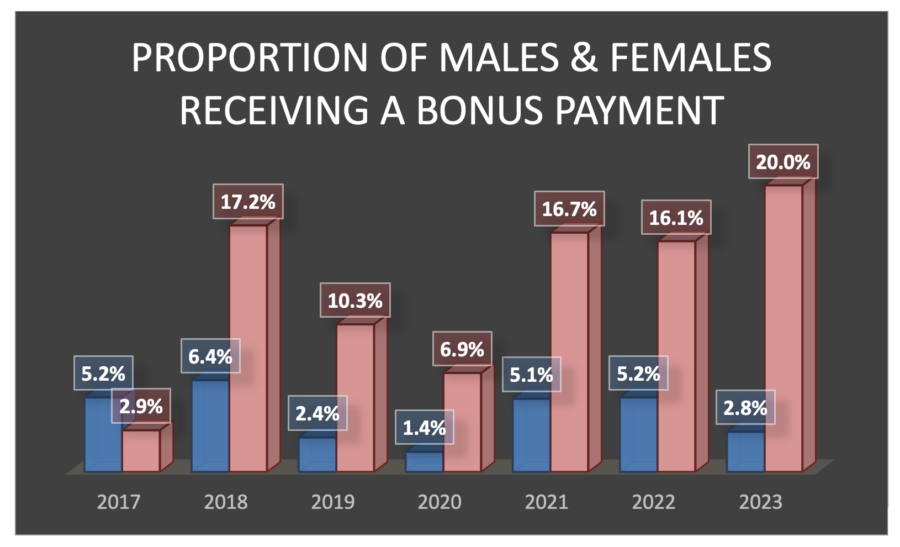
As achievement of bonus payments is based on various business performance metrics, after a tougher trading year the number of employees receiving a bonus fell but 20% of female employees received a payment compared to only 2.8% of male counterparts.
The proportion of each gender in quartile pay bands for April 2023 shows:
| Quartile | Lower | Lower middle | Upper middle | Upper |
| Female | 16.3% | 3.8% | 3.8% | 20.0% |
| Male | 83.7% | 96.2% | 96.2% | 80.0% |
As female employees only account for 11% of the workforce this can be partially misleading, the dispersion of each gender across the same pay quartiles shows:
| Quartile | Lower | Lower middle | Upper middle | Upper |
| Female | 37.1% | 8.6% | 8.6% | 45.7% |
| Male | 23.5% | 27.0% | 27.0% | 22.5% |
As outlined above, allowances paid entirely for anti-social working patterns and not related to the value of the role or person within the organisation skews our figures significantly, given the high proportion of shift workers and difficulties in recruiting females to these operations roles. Excluding shift allowances the proportion of each gender in quartile pay bands is quite different:
| Quartile | Lower | Lower middle | Upper middle | Upper |
| Female | 17.5% | 5.0% | 5.0% | 16.3% |
| Male | 82.5% | 95.0% | 95.0% | 83.7% |
And more interestingly the dispersion of each gender across the same pay quartiles excluding shift allowances shows that whilst males are reasonably equally dispersed across the quartiles, more than a third of females sit in the upper quartile:
| Quartile | Lower | Lower middle | Upper middle | Upper |
| Female | 40.0% | 11.4% | 11.4% | 37.2% |
| Male | 23.1% | 26.7% | 26.7% | 23.5% |
ACTION PLAN
Recruitment & Retention
Following the covid pandemic, introduction of IR35, Brexit and the current cost of living crisis which have all had a serious impact on the labour market; recruitment and retention has been extremely challenging over the last 24 months.
Unfortunately fewer women study and work in science, technology, engineering and maths [STEM] disciplines in the UK which form a large part of our organisation. In the medium to longer terms our aim is to recruit/develop more female employees into our operations focused functions as well as our Senior and Middle Management Teams. Significant progress has been made with 10% of the Senior Management Team and 20% of the Middle Management Team now being female.
In order to achieve this aim we will continue to:
Pay Systems
In determining pay and reward for our employees we balance a number of factors, including the economic climate, company performance as well as external market for the roles that we offer. Whilst our reward systems have always ensured full compliance with equal pay, we continue to integrate gender pay gap considerations into future reviews of pay and reward.